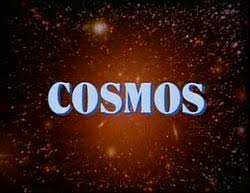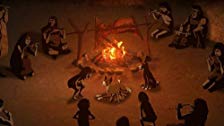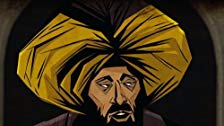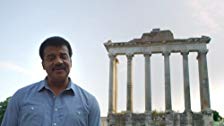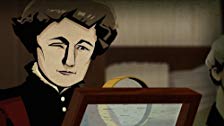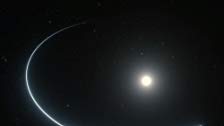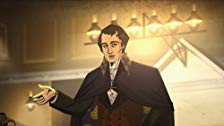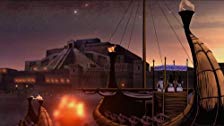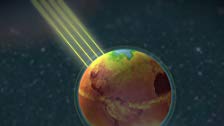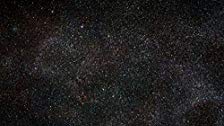Cosmos 2014: Difference between revisions
No edit summary |
|||
| Line 1: | Line 1: | ||
[[Image:Comso_1980.jpg|right]] | [[Image:Comso_1980.jpg|right]] | ||
As I mentioned on the main [[Astronomy |astronomy]] page, I like | As I mentioned on the main [[Astronomy |astronomy]] page,I used to like Neil deGrasse Tyson more than I do now. I'm not sure why, but at some point he jumped the shark at some point. The production value is good though, and it's a decent update to the orginal... | ||
= Comos (1980) - Carl Sagan = | = Comos (1980) - Carl Sagan = | ||
| Line 12: | Line 12: | ||
</br> | </br> | ||
<blockquote>'' | <blockquote>''A thrilling, new adventure across space and time begins.''</blockquote> | ||
</br> | </br> | ||
== Episode 2 One Voice in the Cosmic Fugue [[Image:3.5-stars.png|100px]] == | == Episode 2 One Voice in the Cosmic Fugue [[Image:3.5-stars.png|100px]] == | ||
[[Image:Cosmos2014_e2.jpg|left]] A | [[Image:Cosmos2014_e2.jpg|left]] A | ||
</br> | |||
<blockquote>'' | <blockquote>''Artificial selection is one example, eyes another, of the well-documented and inescapable process of evolution--change in a population of species over time--by natural selection. These are some of the things that molecules do.''</blockquote> | ||
</br> | </br> | ||
| Line 25: | Line 26: | ||
</br> | </br> | ||
<blockquote>'' | <blockquote>''Neil deGrasse Tyson sets off on the Ship of the Imagination to chase a single comet through its million-year plunge toward Sol. Later, Tyson visits the birth-place of Sir Isaac Newton and retraces the unlikely friendship between Newton and brilliant polymath Edmond Halley. It was Halley's patience and generosity which allowed Newton to conquer his fear of isolation and find the courage to publish his masterwork, "Principia Mathematica" which launched a scientific revolution.''</blockquote> | ||
</br> | </br> | ||
| Line 32: | Line 33: | ||
</br> | </br> | ||
<blockquote>'' | <blockquote>''Explores how light, time and gravity affects our perception of the universe''</blockquote> | ||
</br> | </br> | ||
| Line 38: | Line 39: | ||
[[Image:Cosmos2014_e5.jpg|left]] A | [[Image:Cosmos2014_e5.jpg|left]] A | ||
</br> | </br> | ||
<blockquote>'' | <blockquote>''The Ship of the Imagination travels back in time to reveal 11th century Europe and North Africa during the golden age of Islam, when brilliant physicist Ibn al-Haytham discovered the scientific method and first understood how we see, and how light travels. Later, William Herschel discovers the infrared and the signature hidden in the light of every star, eventually unlocking one of the keys to the cosmos.''</blockquote> | ||
</br> | </br> | ||
| Line 45: | Line 46: | ||
</br> | </br> | ||
<blockquote>'' | <blockquote>''The Ship of the Imagination ventures on an epic voyage to the bottom of a dewdrop to explore the universe on the smallest scale and observe exotic life forms invisible to the naked eye. Then, host Neil deGrasse Tyson explains the neural network in our brains which determine our sense of smell and memory, and later, he travels deep beneath the surface of the Earth to discover the most mysterious particle we know.''</blockquote> | ||
</br> | </br> | ||
| Line 52: | Line 53: | ||
</br> | </br> | ||
<blockquote>'' | <blockquote>''To determine the true age of the Earth, geochemist Clair Patterson developed the uranium-lead dating method to make an unprecedented discovery - calculating Earth's age of 4.5 billion years. But Patterson's groundbreaking discoveries were just beginning. Patterson made it his mission to draw public attention to the detrimental effects of lead in the environment and dedicated his career to fighting against the petroleum and chemical industry, eventually achieving public health's biggest victory of the 20th century.''</blockquote> | ||
</br> | </br> | ||
| Line 59: | Line 60: | ||
</br> | </br> | ||
<blockquote>'' | <blockquote>''Explores the violent cosmic phenomenon of supernovas, which on average occur once per galaxy per century or one billion times per year in the observable universe.''</blockquote> | ||
</br> | </br> | ||
| Line 66: | Line 67: | ||
</br> | </br> | ||
<blockquote>'' | <blockquote>''The Ship of the Imagination embarks on a journey through space and time to grasp how the autobiography of the Earth is written in its atoms, its oceans, its continents and all living things. Later, American geologist Marie Tharp creates the first true map of Earth's ocean floor, and discovers microscopic life that exists deep beneath the ocean.''</blockquote> | ||
</br> | </br> | ||
| Line 73: | Line 74: | ||
</br> | </br> | ||
<blockquote>'' | <blockquote>''Travel to 19th century England and meet Michael Faraday, a child of poverty who grew up to invent the motor and the generator. His ideas about electricity and discovery of magnetic fields changed the world and paved the way for future scientists to make giant strides in the world of high technology and instantaneous communication.''</blockquote> | ||
</br> | </br> | ||
| Line 80: | Line 81: | ||
</br> | </br> | ||
<blockquote>'' | <blockquote>''The Ship of the Imagination travels across the cosmos to discover the possibility of beings that live forever and explain why other civilizations perish. Then, visit the Cosmic Calendar of the Future and contemplate what lies ahead with a hopeful vision.''</blockquote> | ||
</br> | </br> | ||
| Line 87: | Line 88: | ||
</br> | </br> | ||
<blockquote>'' | <blockquote>''Degrasse discusses our nearest neighboring planet Venus and its climate, the climate change on Earth and if it is caused by humans.''</blockquote> | ||
</br> | </br> | ||
| Line 94: | Line 95: | ||
</br> | </br> | ||
<blockquote>'' | <blockquote>''Description of the two Voyager probes sent for interstellar travel. Tyson ends the series by emphasizing Sagan's message on the human condition in the vastness of the cosmos & to encourage viewers to continue to explore and discover the undiscovered.''</blockquote> | ||
</br> | </br> | ||
Revision as of 20:29, 28 March 2019
As I mentioned on the main astronomy page,I used to like Neil deGrasse Tyson more than I do now. I'm not sure why, but at some point he jumped the shark at some point. The production value is good though, and it's a decent update to the orginal...
Comos (1980) - Carl Sagan
This is the general description of the course/series. It's pretty bald.
An exploration of our discovery of the laws of nature and coordinates in space and time.
Episode 1 The Shores of the Cosmic Ocean 
Carl
A thrilling, new adventure across space and time begins.
Episode 2 One Voice in the Cosmic Fugue 
A
Artificial selection is one example, eyes another, of the well-documented and inescapable process of evolution--change in a population of species over time--by natural selection. These are some of the things that molecules do.
Episode 3 Harmony of the Worlds 
This
Neil deGrasse Tyson sets off on the Ship of the Imagination to chase a single comet through its million-year plunge toward Sol. Later, Tyson visits the birth-place of Sir Isaac Newton and retraces the unlikely friendship between Newton and brilliant polymath Edmond Halley. It was Halley's patience and generosity which allowed Newton to conquer his fear of isolation and find the courage to publish his masterwork, "Principia Mathematica" which launched a scientific revolution.
Episode 4 Heaven and Hell 
This
Explores how light, time and gravity affects our perception of the universe
Episode 5 Blues for a Red Planet 
A
The Ship of the Imagination travels back in time to reveal 11th century Europe and North Africa during the golden age of Islam, when brilliant physicist Ibn al-Haytham discovered the scientific method and first understood how we see, and how light travels. Later, William Herschel discovers the infrared and the signature hidden in the light of every star, eventually unlocking one of the keys to the cosmos.
Episode 6 Travellers' Tales
A
The Ship of the Imagination ventures on an epic voyage to the bottom of a dewdrop to explore the universe on the smallest scale and observe exotic life forms invisible to the naked eye. Then, host Neil deGrasse Tyson explains the neural network in our brains which determine our sense of smell and memory, and later, he travels deep beneath the surface of the Earth to discover the most mysterious particle we know.
Episode 7 The Backbone of Night 
A
To determine the true age of the Earth, geochemist Clair Patterson developed the uranium-lead dating method to make an unprecedented discovery - calculating Earth's age of 4.5 billion years. But Patterson's groundbreaking discoveries were just beginning. Patterson made it his mission to draw public attention to the detrimental effects of lead in the environment and dedicated his career to fighting against the petroleum and chemical industry, eventually achieving public health's biggest victory of the 20th century.
Episode 8 Journeys in Space and Time 
An
Explores the violent cosmic phenomenon of supernovas, which on average occur once per galaxy per century or one billion times per year in the observable universe.
Episode 9 The Lives of the Stars 
Another
The Ship of the Imagination embarks on a journey through space and time to grasp how the autobiography of the Earth is written in its atoms, its oceans, its continents and all living things. Later, American geologist Marie Tharp creates the first true map of Earth's ocean floor, and discovers microscopic life that exists deep beneath the ocean.
Episode 10 The Edge of Forever 
OK
Travel to 19th century England and meet Michael Faraday, a child of poverty who grew up to invent the motor and the generator. His ideas about electricity and discovery of magnetic fields changed the world and paved the way for future scientists to make giant strides in the world of high technology and instantaneous communication.
Episode 11 The Persistence of Memory 
Pretty
The Ship of the Imagination travels across the cosmos to discover the possibility of beings that live forever and explain why other civilizations perish. Then, visit the Cosmic Calendar of the Future and contemplate what lies ahead with a hopeful vision.
Episode 12 Encyclopaedia Galactica 
A
Degrasse discusses our nearest neighboring planet Venus and its climate, the climate change on Earth and if it is caused by humans.
Episode 13 Who Speaks for Earth? 
The
Description of the two Voyager probes sent for interstellar travel. Tyson ends the series by emphasizing Sagan's message on the human condition in the vastness of the cosmos & to encourage viewers to continue to explore and discover the undiscovered.
